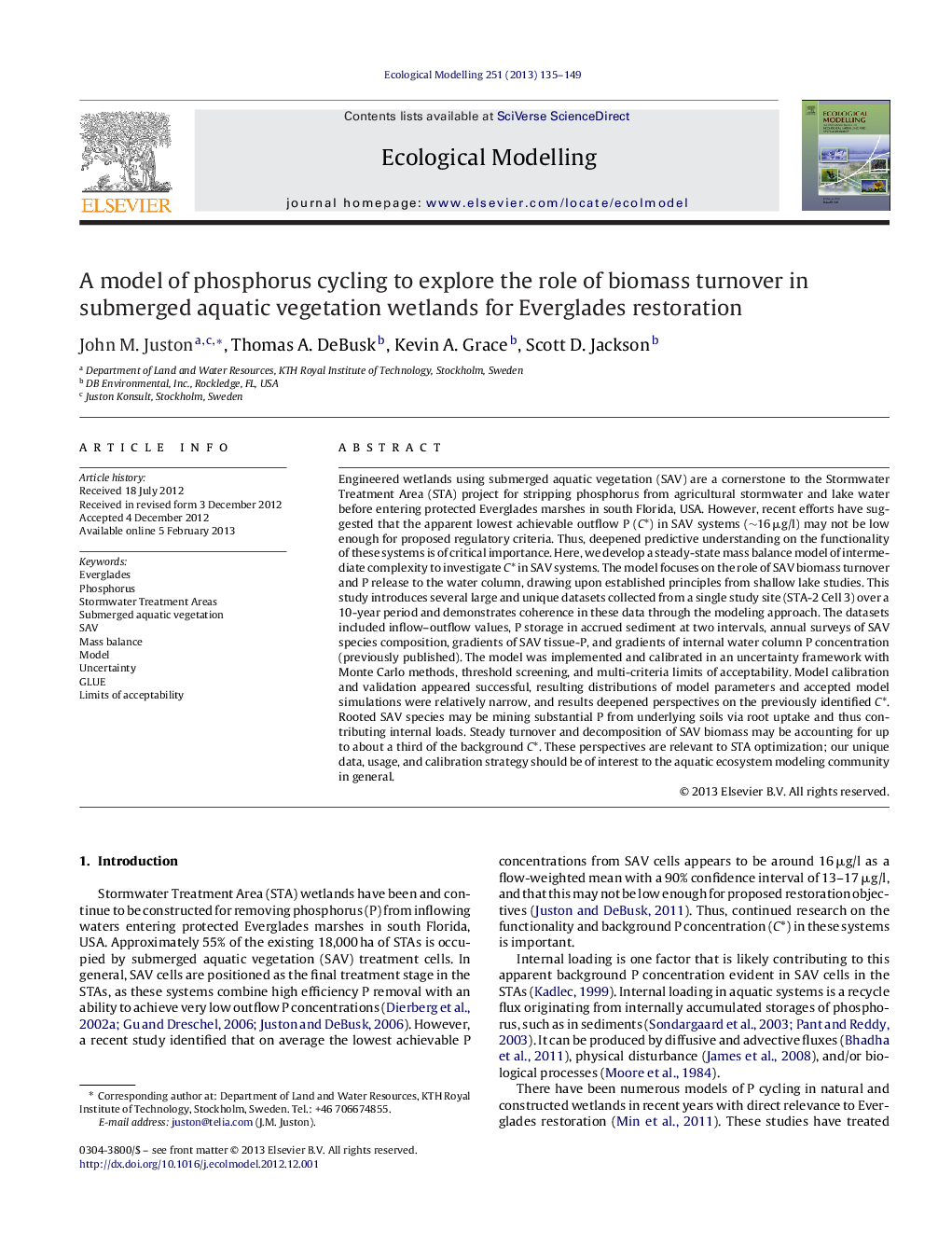| کد مقاله | کد نشریه | سال انتشار | مقاله انگلیسی | نسخه تمام متن |
|---|---|---|---|---|
| 4376149 | 1617494 | 2013 | 15 صفحه PDF | دانلود رایگان |

Engineered wetlands using submerged aquatic vegetation (SAV) are a cornerstone to the Stormwater Treatment Area (STA) project for stripping phosphorus from agricultural stormwater and lake water before entering protected Everglades marshes in south Florida, USA. However, recent efforts have suggested that the apparent lowest achievable outflow P (C*) in SAV systems (∼16 μg/l) may not be low enough for proposed regulatory criteria. Thus, deepened predictive understanding on the functionality of these systems is of critical importance. Here, we develop a steady-state mass balance model of intermediate complexity to investigate C* in SAV systems. The model focuses on the role of SAV biomass turnover and P release to the water column, drawing upon established principles from shallow lake studies. This study introduces several large and unique datasets collected from a single study site (STA-2 Cell 3) over a 10-year period and demonstrates coherence in these data through the modeling approach. The datasets included inflow–outflow values, P storage in accrued sediment at two intervals, annual surveys of SAV species composition, gradients of SAV tissue-P, and gradients of internal water column P concentration (previously published). The model was implemented and calibrated in an uncertainty framework with Monte Carlo methods, threshold screening, and multi-criteria limits of acceptability. Model calibration and validation appeared successful, resulting distributions of model parameters and accepted model simulations were relatively narrow, and results deepened perspectives on the previously identified C*. Rooted SAV species may be mining substantial P from underlying soils via root uptake and thus contributing internal loads. Steady turnover and decomposition of SAV biomass may be accounting for up to about a third of the background C*. These perspectives are relevant to STA optimization; our unique data, usage, and calibration strategy should be of interest to the aquatic ecosystem modeling community in general.
► New model for P cycling in wetland systems dominated by submerged aquatic vegetation.
► P cycle hypothesis supported by lake studies, yet previously unapplied to engineered wetlands.
► Study links several large, diverse, and unique datasets from a study site in south Florida.
► Model calibration conducted using recent developments in Monte Carlo-based uncertainty methods.
► Results relevant to optimization of Stormwater Treatment Areas for Everglades restoration.
Journal: Ecological Modelling - Volume 251, 24 February 2013, Pages 135–149